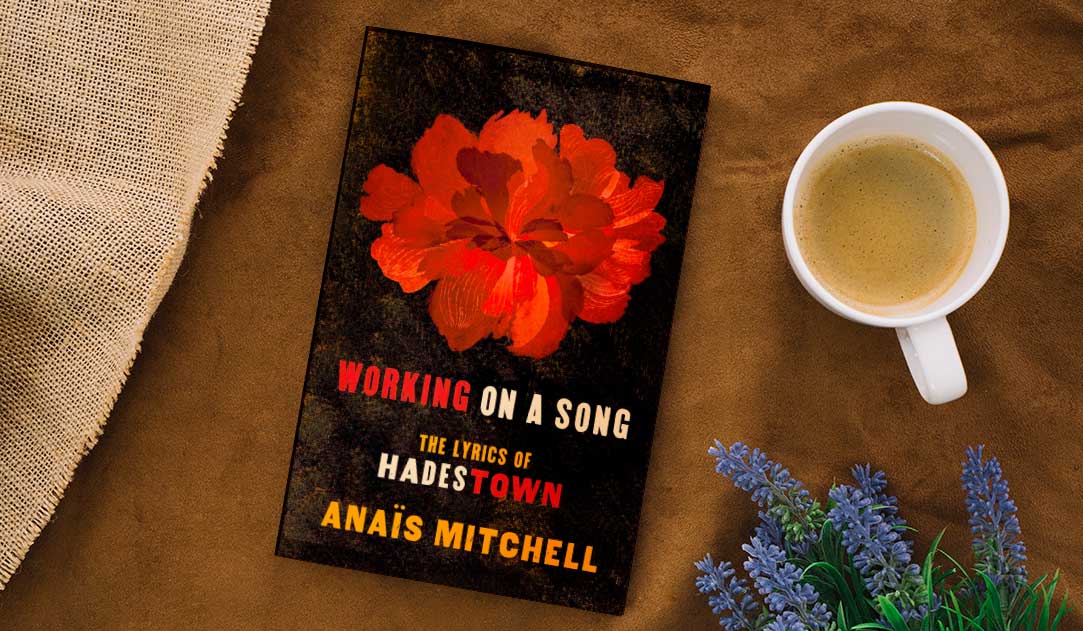I was gifted Working on a Song: The Lyrics of Hadestown a few months ago, having only listened to the soundtrack once. So I figured I might as well take another listen if I’m gonna read a book about it—and oh am I glad I did! Hadestown is one of my favorite scores ever with an incredibly-crafted marriage of the poetry of folk music, the darkness of blues and the magic of theatre. But enough about Hadestown and on to Working on a Song.
Working on a Song is not a how-to book, or an advisory book, but rather an inside look at the creation of the lyrics of Hadestown. What makes it so special? As fans of the musical will know, Hadestown went through MANY iterations over 10-15 years, from a community theatre project, to a concept album, to regional theatres—it made a long, windy trip to Broadway where it finally won the Tony. This makes it the perfect case study for the editing and revision stage of writing, particularly in a collaborative editing process.
Like coffee with a friend
I was drawn in from the start by Anais Mitchell’s tone. Humble, intelligent and warm, she describes her writing process, (how the songs were born, how they changed) as if talking to a friend. And throughout it all she shows a great reverence for the art of writing. She says often that she “discovered” a line or was “fascinated” by a rhyme, showing how much of a mystery creating art is, even to its creators.
Within this compact little book, you’ll find the lyrics to each song followed by notes. Each “Notes” section is divided into the different productions during Hadestown’s life span, and details what changes were made, when, and why. So if you know the soundtrack well, this will be a rather quick read for you. However, the insights into the crafting and recrafting of the lyrics are invaluable.
Mitchell explicitly and implicitly makes the case for trying and failing and trying again, with each new production, each new version of the songs. A favorite quote from the book:
“Writing is more like gardening. You’re raking around in the dirt, pulling up weeds. Flowers you love and find beautiful die on you. But not for nothing; they go back into the soil, and they nourish it. It’s the act of raking that prepares the ground, and it’s the seeds of those dead beautiful flowers that replant themselves in it and eventually come up right. The “right” thing could not exist without the “wrong” ones.”
Insights into the Hadestown creative process
With Hadestown being fully sung-through, Working on a Song gives insights not just into lyric-writing, but into book-writing and story-crafting. Not only does she discuss specific lines and language, but also song order and plot development. Mitchell lets us inside her relationships with the rest of the creative team, split into “Team Dramaturgy” and “Team Music.” She discusses the push and pull of these two sides, and how that creates a successful working piece. One key takeaway from Team Dramaturgy is a lesson Mitchell learned the hard way when writing such gorgeous poetry: that sometimes lyrical cleverness or beauty needs to be sacrificed for clarity of character or story.
She showcases the power of the creative team in solving one of the major issues they faced: audiences didn’t like Orpheus, the main protagonist. (Not a small issue at all!) She describes the way they worked through the moments that didn’t land, the way they diagnosed certain language problems. Mitchell’s way of talking about the major rewrites unearths a beauty within the crisis of last minute revisions. It’s never “fixing the problem,” but reframing the character or discovering their true motivation. Mitchell’s perseverance and endless creative energy shines through the book above all.
While this is not a “songwriting tips” kind of book, there are a few diamonds thrown in. We’ve all heard the phrase “Kill your Darlings”, but Anais has a slightly different take. She calls the lyrics she loves but can’t find a home for “orphans,” and included them at the bottom of every draft she sent to the creative team. This is a tip for any writer who struggles to let go of beloved parts of what they’ve written. You don’t have to throw those ideas away, just save them for later. (To go back to Mitchell’s garden analogy, many times they end up growing into a different “right” line). 
A unique entry point to musical theatre
Unique to Mitchell’s writing experience is her background in folk music. She talks about this dichotomy, where folk and theatre overlap and where they don’t. For example, when playing a song in concert there is a “suspension of time,” where the audience will sit and listen to the imagery and the lyrics without needing the song to bring them anywhere. In theatre, as we know, the audience wants action even in songs—they want decisions being made, growth occurring, relationships evolving. So, balance being a recurring theme, she talks about finding her place between those two worlds and creating an effective and authentic blend.
Working on a Song: The Lyrics of Hadestown is a short read, but one I highly recommend, especially for lovers of the soundtrack. If you’ve never listened to Hadestown, what are you still doing here? Go listen to it right now! Then grab this book off Amazon or from the nearest library, and take a deep dive into the creative process of what I would consider a masterpiece of modern musical theatre.
Also see the Playbill article: “Inside Anaïs Mitchell’s Hadestown Script for Broadway”



















I bought this several months ago as a birthday gift for myself. It’s excellent. Hadestown is my favorite musical, so I wasn’t surprised!